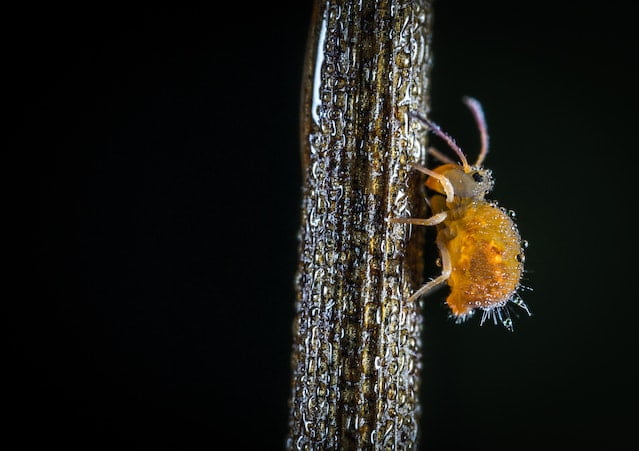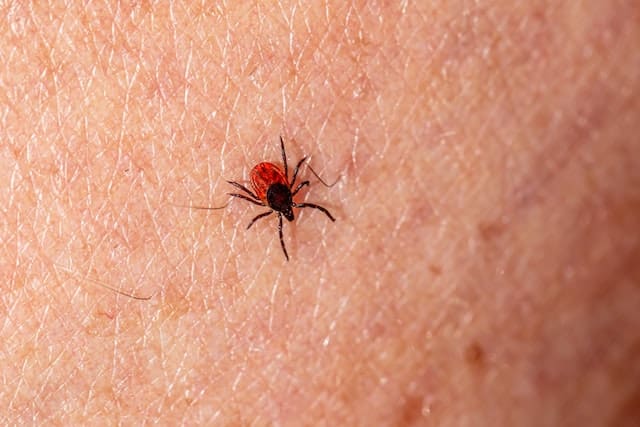Lice and ticks are tiny insects that consume blood but there are some key differences between lice vs tick.
It’s unfortunate that these tiny insects bother both humans and animals by attaching themselves to the body. It’s never a pleasant experience having a lice on your hair.
I have seen this tiny insect cause discomfort to a little girl for weeks. They are very tiny and hard to get rid of.
The head lice is an insect most people are familiar with but there are other types of tiny insects. Lice and ticks are parasites that feed on blood and there are over 2,500 species of chewing of lice.
While lice are parasites that feed on the blood of their host or dead skin, ticks are tiny arachnids that usually feed on the blood of mammals, birds, reptiles, or amphibians.
We will be discussing the key difference between lice vs tick. Keep reading to find out the difference between these two parasites.

What Are Lice?
A louse is a small parasitic wingless insect that feeds on human blood by attaching itself to the hair. They are of the order Phthiraptera.
Head lice is a type of lice that a lot of people are very familiar with. However, there are other kinds of lice that exist, with over 2,500 species of chewing lice and about 500 species of sucking lice.
Lice are parasites that cause discomfort to humans. They spread and multiply quickly because of the number of eggs female adult lice are able to lay in just one day.
Female adult lice can lay close to six eggs in just one day and they do this right onto the shaft of the human hair. The eggs that are likely to hatch are those that are a few millilitres from the scalp.
The eggs will remain attached to the hair because of the secretions from the female louse.
In medical terms, an infestation with head lice is referred to as Pediculosis captitis according to Helathline.com.
According to the Centers for Disease Control and Prevention, the adult louse is just the same size as a sesame seed. It has six legs, each with claws, and it’s difficult to see, as it can be any colour from tan to greyish-white.
The adult louse will usually appear darker in a dark hair colour. They can live up to thirty days on a person’s hair.
Adult lice’s main source of survival is blood. Without feeding on blood for up to a day or two, they will die. The female louse is usually bigger than the males and they can lay up to six eggs in 24 hours.
Also Read: 5w20 vs 5w30: Difference and Comparison
Types of Lice
The most common type of lice is the head lice but there is also the body lice and the pubic lice.
- Head Lice: The body lice are parasites that need a human to survive. Head lice are wingless parasites that depend on human blood for survival.
- Head lice are comfortable on the scalp, but these parasites are often found in body areas where it’s warm like at the back of the neck or around the ears.
- Body Lice: This type of lice is quite different from head lice. While head lice lay their eggs on the scalp, body lice lay their eggs on clothing. These types of lice live in clothing and move to the human body when they need to feed on blood.
- They carry a few diseases such as relapsing fever, trench fever, and louse-borne typhus.
- Pubic Lice: These types of lice are also called crabs because of their large front legs, which are only visible underneath a microscope. Pubic lice are the smallest kind of lice and they can be transmitted from one person to another through sexual intercourse.
- They are called pubic lice because they live in the hair of their host genitals. It’s bad, causing a lot of discomfort and itching.
What Is a Tick?
Ticks are tiny parasitic arachnids of the order lxodida. These parasites are part of the mite superorder Parasitiformes according to Wikipedia.
Ticks are parasites that survive by feeding on the blood of mammals, birds, amphibians, and reptiles. An adult tick is about 3 to 5 millimetres in length.
These parasitic arachnids are found around the world, especially in warm and humid climates.
Ticks are parasitic arachnids that belong to two major families, the Ixodidae and the Argasidae. The Ixodidae is also known as the hard ticks and the Argasisae is known as the soft ticks.
These tiny insects are mostly found in warm or humid climates. Nuttalliella is a genus of tick that is predominant in the southern region of Africa.
Adult ticks are tiny and have peer-shaped bodies.

Also Read: Family Medicine vs Internal Medicine: Difference and Comparison
Lice vs Tick: Comparison Chart
| Lice | Tick | |
| Definition | The life cycle of ticks comprises four stages: eggs, larva, nymph, and adult. These tiny parasitic arachnids feed on three different host during their life cycle which can last up to two years. | Ticks are parasites that survive by feeding on the blood of mammals, birds, amphibians, and reptiles. |
| Feeding and nutrition | Blood of hosts | Blood of host |
| Life cycle | The life cycle of lice comprises three stages which are nit, nymph, and adult. Adult female lice lay up to six eggs a day. | The life cycle of ticks comprises of four stages: eggs, larva, nymph, and adult. These tiny parasitic arachnids feed on three different host during their life cycle which can last up to two years. |
| Classification and anatomy | Lice are parasites that belong to Phylum Arthropoda and class insects. They also belong to the order Phthiraptera (sucking lice) or order Mallophaga (chewing lice) | Ticks belong to the Phylum Arthropoda and class arachnids, and order acari |
| Diseases | Lice cause rickettsial diseases, relapsing fever, trench fever, and louse-borne typhus. | Ticks transmit diseases like babesiosis, Lyme diseases, and hepatozoonosis. |
| Behaviour and habitat | Sucking lice are usually found on human hair and feed by sucking blood from the scalp. Chewing lice are a type of lice that feed on mammals and birds. | Ticks are usually found close to trees and shrubs. These parasitic arachnids attach themselves to a host, inserting their mandibles and feeding tubes into the skin of their host. |
Also Read: AKA and Delta: Difference and Comparison
Lice vs Tick: Appearance and Behaviour
Lice and ticks are parasites that survive on their hosts by feeding on their blood. Both lice and ticks are very small, but ticks are bigger, darker and easy to spot compared to lice.
Compared to lice, ticks can appear on the lower part of the human body. They usually latch onto the human skin when they make contact with people coming into areas like dense woodlands or grassy areas in warm climates.
Lice are usually found on human hair, especially where your hair is thickest. Lice latch onto the human hair scalp or genital areas.
Another difference between lice and ticks is how these parasites interact with your body. Ticks will latch onto your body and fall off once they are filled with the amount of blood they need.
It’s a bad experience with lice because they will attach themselves to your body, lay multiple eggs, and feed on your blood until you are able to remove them.
Frequently Asked Questions
Here are some frequently asked questions about the difference between lice vs tick.
Are lice bigger than ticks?
No, lice are smaller than ticks and you will hardly see them in your hair. Ticks on the order hand are bigger and you can easily spot them.
How do I know if I have lice or ticks?
Lice are usually found on human hair, especially where your hair is thickest. You will notice itchy red bumps and rashes if you have lice on your hair.
Also Read: Faculty vs Staff: Difference and Comparison
Do lice or ticks jump?
Lice are wingless tiny insects and therefore cannot jump. Ticks also cannot jump but crawl to latch onto their host body.
Conclusion
A louse is a small parasitic wingless insect that feeds on human blood by attaching itself to the hair. Ticks are parasites that survive by feeding on the blood of mammals, birds, amphibians, and reptiles. An adult tick is about 3 to 5 millimetres in length.
Lice are usually found on human hair, especially where your hair is thickest. Ticks usually latch onto the human skin when they make contact with people coming into areas like dense woodlands or grassy areas in warm climates.
Recommendations
- Faculty vs Staff: Difference and Comparison
- Seminar vs Workshop: Difference and Comparison
- Pint vs Quart: Difference and Comparison
- Emasculate vs Demasculate: Difference and Comparison
- Meter vs Yard: Difference and Comparison
References
- Healthline: How to Tell the Difference Between Ticks and Lice
- Diffen: Lice vs Tick
- Differencebetween.info: Difference between Ticks and Lice
- Wikipedia: Tick
- Mayoclinic: Lice

Leave a Reply